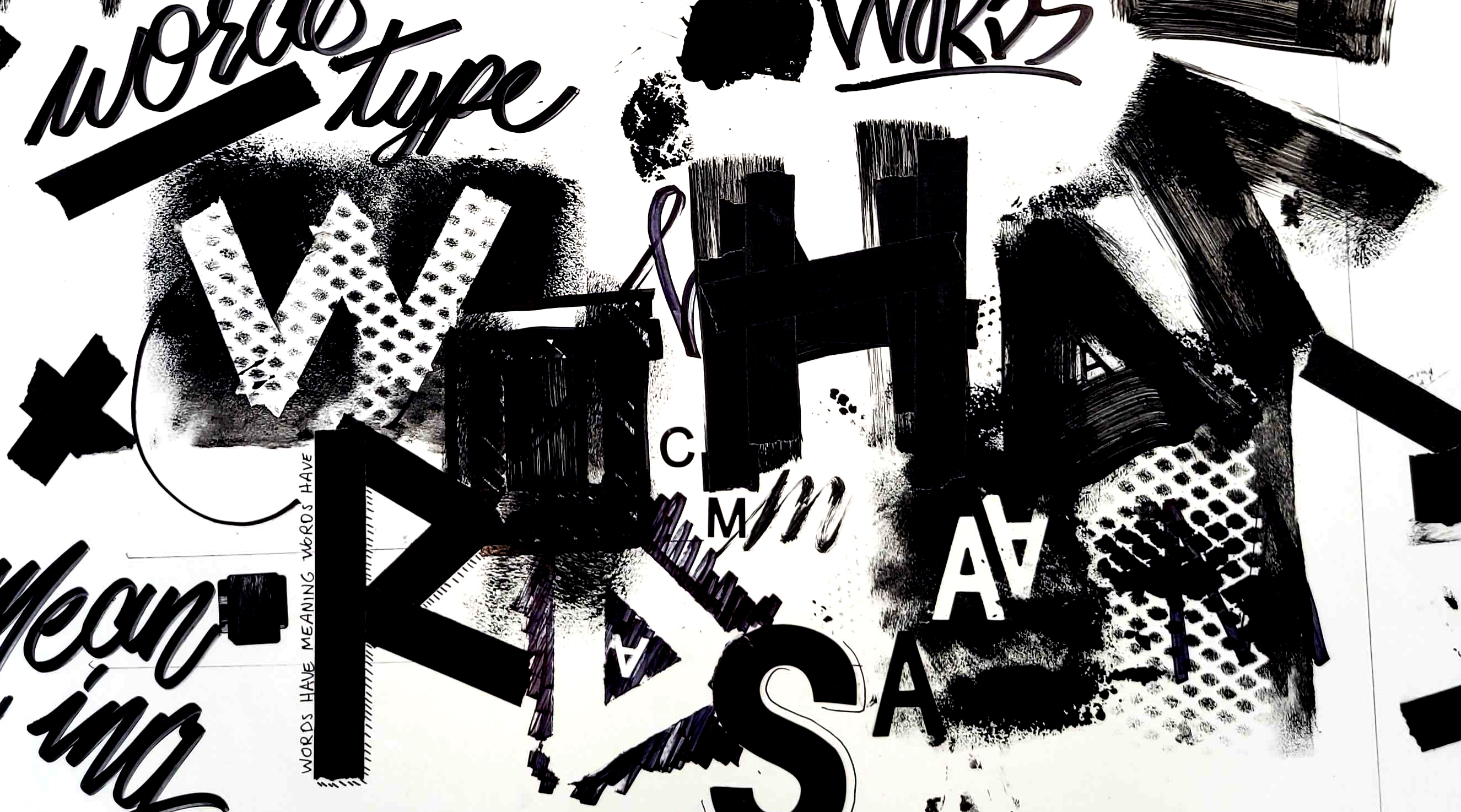Why Experimental Typography Matters?
Dom has spent a lot of time thinking about experimental typography’s place in the design process.

In its purest form, typography is an essential aspect of design and communication, and it plays a vital role in delivering a message effectively. Yep! We are all on the same page there. However I have been thinking recently about the importance of including experimental typography into our processes and practices.
I am very privileged over the last 5 years (with a pandemic break) to have run multiple experimental typography workshops of various sizes for various organizations. Using a wide range of materials groups of 10 and up to 50, have joined me in creating unique typographic compositions (examples included). It got me thinking though: Why does this matter? Who cares? This isn’t sellable (most of the time). Clients won’t pay me to do this. It’s just art for art’s sake.
Experimental typography however allows designers to break free from conventional rules and create unique visceral experiences. By using the materials mentioned above designers explore unconventional letterforms, layouts, and compositions. They can break the mold of traditional typography, and express their creativity and individuality. Again, is this just art for art’s sake. I would argue it is an important exercise to reconnect with a passion that is rooted in most of the designers I know. A way to fan a flame.
There are 3 points I think that come out of the act of creation:
Evoking Emotions: Experimental typography amplifies an emotional impact by using techniques such as distortion, overlapping, layering, and blending. This adds depth, complexity, and personality. By experimenting with typography, designers can tap into the subconscious by creating memorable experiences.
Cross-disciplinary Collaboration: In the workshops I often ask people to work in collaboration with people that they don’t know. Experimental typography can involve deeper collaboration between designers. This collaborative process fosters an exchange of ideas and perspectives. The designers bring together diverse skill sets which can result in unexpected and conceptually rich compositions.
Driving Innovation: As seen in our community, experimental typography can lead to design innovation. It pushes designers to think differently. Through experimentation, designers dig deep and push discovery. I truly believe that the practice of experimental typography encourages curiosity.
Is all of this just justifying my existence? Meh, maybe. 🙂 I can of course write an ROI line for experimental typography. Here: As technology advances and new mediums emerge, embracing experimentation in typography will become increasingly important in shaping the future of visual communication. What I have seen however is the joy on the faces of the designers and creators that have drawn, broken, stretched, cut, pasted and painted the compositions you see here (and many more). A joy of returning to the handmade, the conceptual and the freedom.